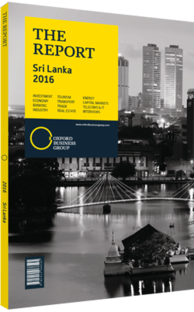Experiencing Sri Lanka’s tea country
The British brought tea to Sri Lanka in the mid-1800s and, quickly overtaking coffee, it has grown into one of the island nation’s most notable exports. Sri Lanka’s single-origin tea, Ceylon Tea, is highly sought after in international markets and well known companies like Dilmah sell it at a premium all over the world. However, while tea as a product continues to gain popularity, it also serves as an increasingly important tourism driver in the places it is grown. In Sri Lanka this is the country’s central highlands, rising up out of the island’s south central interior.
High Country
The rolling hills and mountains are remarkably scenic, just a few hours drive from the east, south and west coasts. From Colombo, the terrain progressively grows more rugged and the temperature drops, with waterfalls blanketing the region off any number of its steep precipices. The distinct jungle fauna near the coasts abruptly turns to more temperate forests, and soon tea trees ascend the hillsides in neatly planted rows, with tea pluckers out on most days throwing leaves into their satchels.
With Nuwara Eliya – often called “Little England” – as the historical tea hub and colonial outpost for Sri Lankan tea plantations, actual tea country expands outward into a number of smaller cities and towns, including Hatton, Norwood, Ella and Haputale – as well as Horton Plains National Park – which are all connected by scenic train rides.
Activies
A number of leisure developments in the upcountry are built around the estates of former colonial tea planters, nestled amongst tea plantations. Nature walks through these plantations are a common activity, and trekking throughout the region takes on varying levels of difficulty. While casual strolls at some plantations range only a few kilometres, hikes to the famous lookout points of Adam’s Peak and World’s End are far more strenuous. Regardless of fitness level, you are bound to find a hike that fits your needs, and the views are always exceptional. Additionally, tea factory visits are a common activity for the traveller, allowing one to see first hand how tea leaves are manufactured, blended and packed for the end consumer. Many factories in the region are open to the public, offer guided tours and allow travellers to pluck and harvest their own tea leaves, with tasting sessions afterwards. A number of waterfalls, large and small, are also common attractions in the central highlands. Sri Lanka is home to over 100 waterfalls, some man-made, most natural, and many still completely inaccessible due to dense vegetation. Devon Waterfall, Bakers Waterfall and Saint Clair Waterfalls are three of the most famous and are easily accessible by car.
Tea & Hospitality
While several leisure companies have begun to capitalise on the island’s tea escapes, Resplendent Ceylon, the hospitality arm of Dilmah Tea, occupies the most luxurious end of the spectrum. Resplendent Ceylon is responsible for bringing the Relais & Chateaux circuit to Sri Lanka, a notable development for the country, elevating its tourism brand to levels on a par with many well known European locales. Relais & Chateaux is a network of over 500 individually owned hotels and restaurants globally, which keep admissions standards high. Properties must posses unique differentiating characteristics from major chain establishments, drawing everything from castles to manor houses to historic monuments and opening them to the public.
Sri Lanka’s key contributions include Tea Trails, five colonial-era tea planters’ bungalows in the high country, along with Resplendent Ceylon’s 5-ha Cape Weligama Resort in the island’s south. The two together conceptualise a unique tea and sea package which leverages two of the country’s most abundant offerings. “The tea country is so scenic, it makes for a great pairing with the southern coast, especially when connected rapidly by air,” Malik Fernando, managing director of Resplendent Ceylon, told OBG.
You have reached the limit of premium articles you can view for free.
Choose from the options below to purchase print or digital editions of our Reports. You can also purchase a website subscription giving you unlimited access to all of our Reports online for 12 months.
If you have already purchased this Report or have a website subscription, please login to continue.

